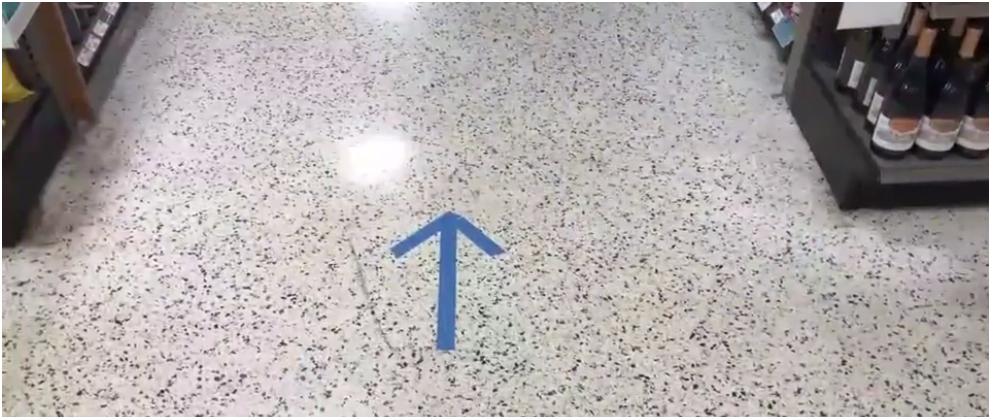
I’ve written about the brilliant Marshall McLuhan in this blog before. If you remember those intro Communications classes, you’ll recall McLuhan was one of the most brilliant observers of media, technology, and the public in the 1960’s as television was disrupting our lives – and the media world.
His famous line – “The medium is the message” – became a catchphrase as McLuhan focused on how technology impacts our culture – and how people were affected as a result. During those days, it was all about the affect of TV. And while video screens are now totally ubiquitous in our lives, 2020 is a very different ballgame. And it’s all because of the global pandemic.
Thanks to COVID-19, let’s take liberty with McLuhan’s famous one-liner, in light of what is happening right now today:
“The malady is the message.”
There is nothing else we’re talking about other than this virus – how it is affecting us, our town, our country, and our world. Today, we are in the heart of its 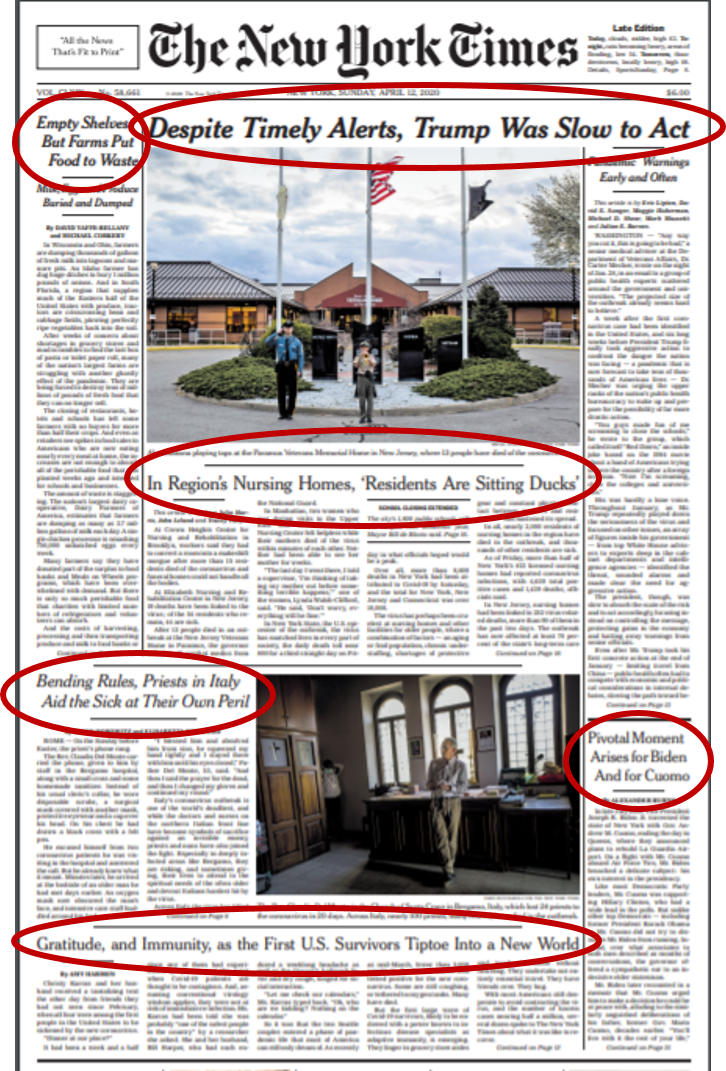 fatal impact on the country, as the wave of “hot spots” sweeps through cities and states. A look at the front page of the New York Times Sunday reveals something amazing – every article was about COVID-19. (It’s probably the same today.)
fatal impact on the country, as the wave of “hot spots” sweeps through cities and states. A look at the front page of the New York Times Sunday reveals something amazing – every article was about COVID-19. (It’s probably the same today.)
It’s hard to imagine any other story that would be so dominant, other than on the day the Japanese bombed Pearl Harbor in 1941, or the 9/11 attacks nearly two decades ago. But COVID-19 is a rolling disaster – one that continues day after day – a story whose facts and impacts continue to change our lives.
And think about this: a formal state of emergency has now been declared in all 50 states – the first time in American history this has happened. It is affirmation of just how universal and widespread COVID-19 truly is throughout the country.
There is no other news. And that’s why the ways in which radio plays this – as an essential communications medium during this crisis – is so important.
Last week on this blog, we talked about how many brands have been forced to pull off a hard pivot, changing their business models on the fly. From OpenTable to barber shops and salons to rock bands, brand after brand has been forced to make adjustments, often uncomfortable but totally necessary. Some are working, while sadly, others are not.
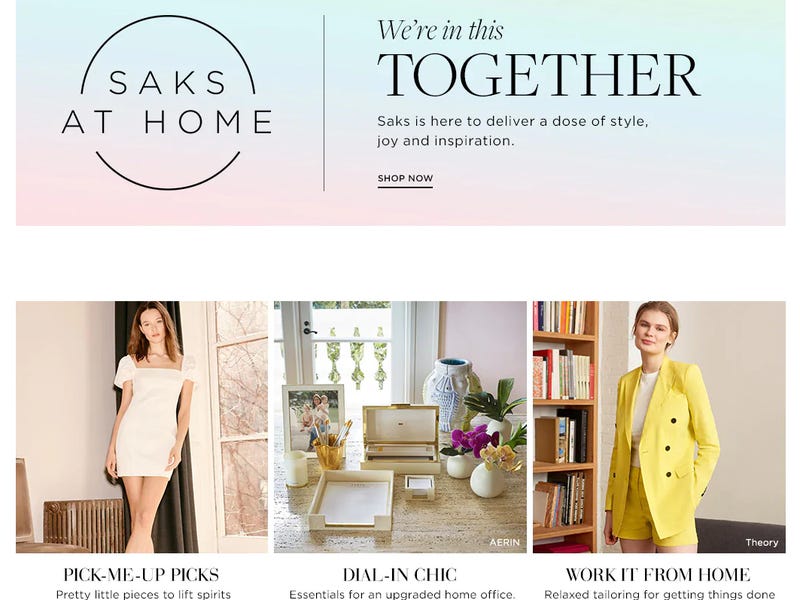 All of a sudden, brands that never had much of an e-commerce component are having to make radical changes to accommodate online sales.
All of a sudden, brands that never had much of an e-commerce component are having to make radical changes to accommodate online sales.
If you’re on their email lists, you’ve seen how many apparel brands and department stores are pulling out all the stops to promote online shopping, thanks to COVID-19.
Many of these campaigns are clever, but not every one will work. Too many retailers paid scant attention to their online presence, instead focusing on consumers physically showing up at malls, shopping centers, and retail strips. Now, they’re trying to change habits.
The malady is the message.
Some radio operators hear this story and cringe – because it sounds all too familiar. That’s because while a handful of visionary broadcasters embraced digital content and distribution strategies years ago, others ignored the call. As a result, those who skated to where the puck was going to be are in a much better position today to retain – and even grow – listening and brands during this crisis. Those that were in “digital denial” or who only reluctantly embraced digital infrastructure and consistent marketing of these assets are now paying the price.
Like Saks and other retailers slow to embrace digital sales and e-commerce, it’s hard to play catch-up in the middle of a global pandemic. And that was the theme for Marketoonist’s Tom Fishburne this week:
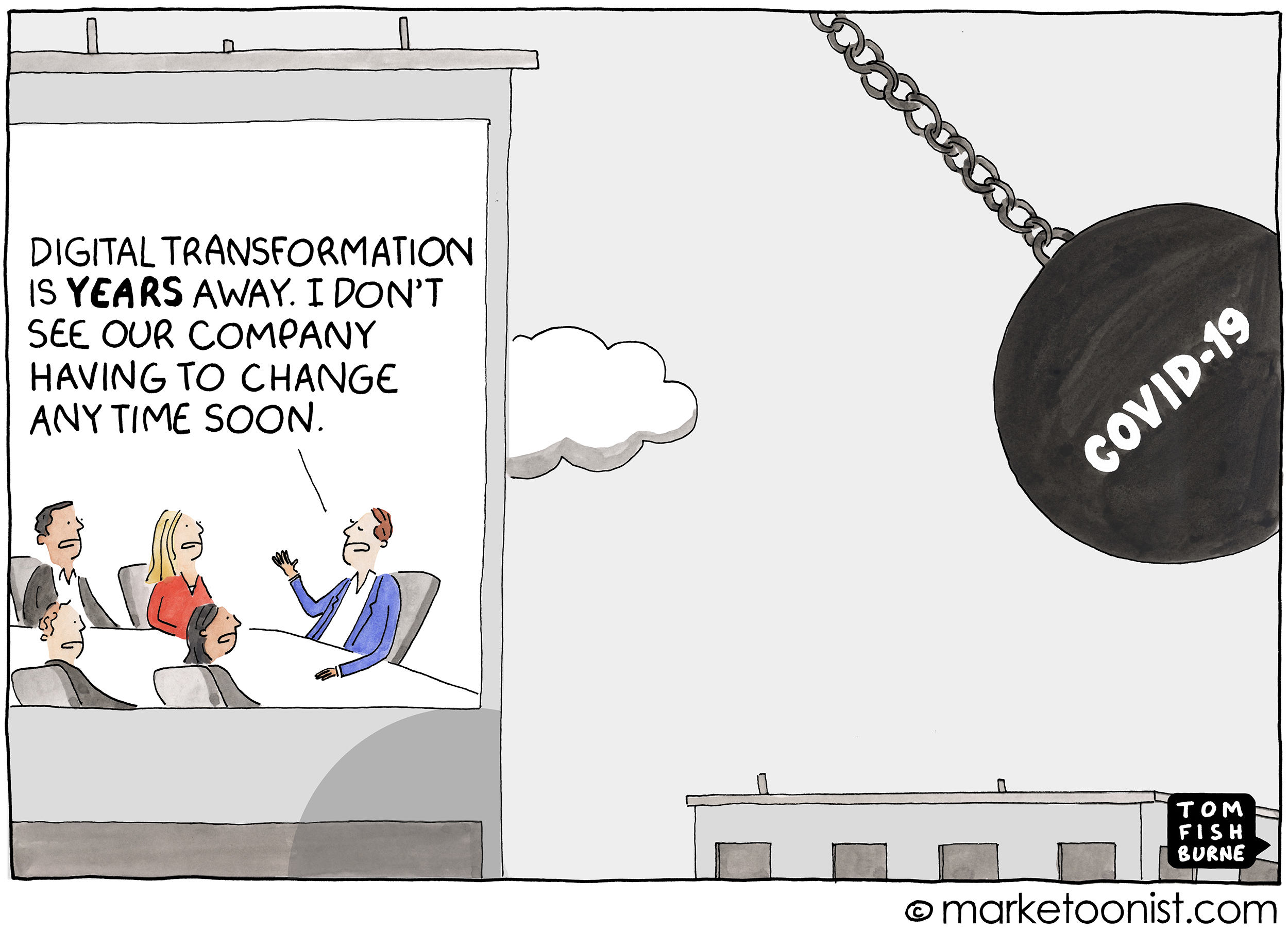
The malady is the message.
So, some companies and categories are scrambling now, trying to change their operating procedures and customer habits in order to survive. There is a price to pay for delaying digital transitioning, and many brands are paying the price in the midst of this crisis.
But many other businesses and companies have had to barely alter their business models, and have remained relatively intact – and financially successful.
Grocery stores are a case in point. Even with most people under “stay at home” orders, they are jammed. Now more than ever, we need their services.
But it’s not completely business as usual at the supermarket or higher-end food store.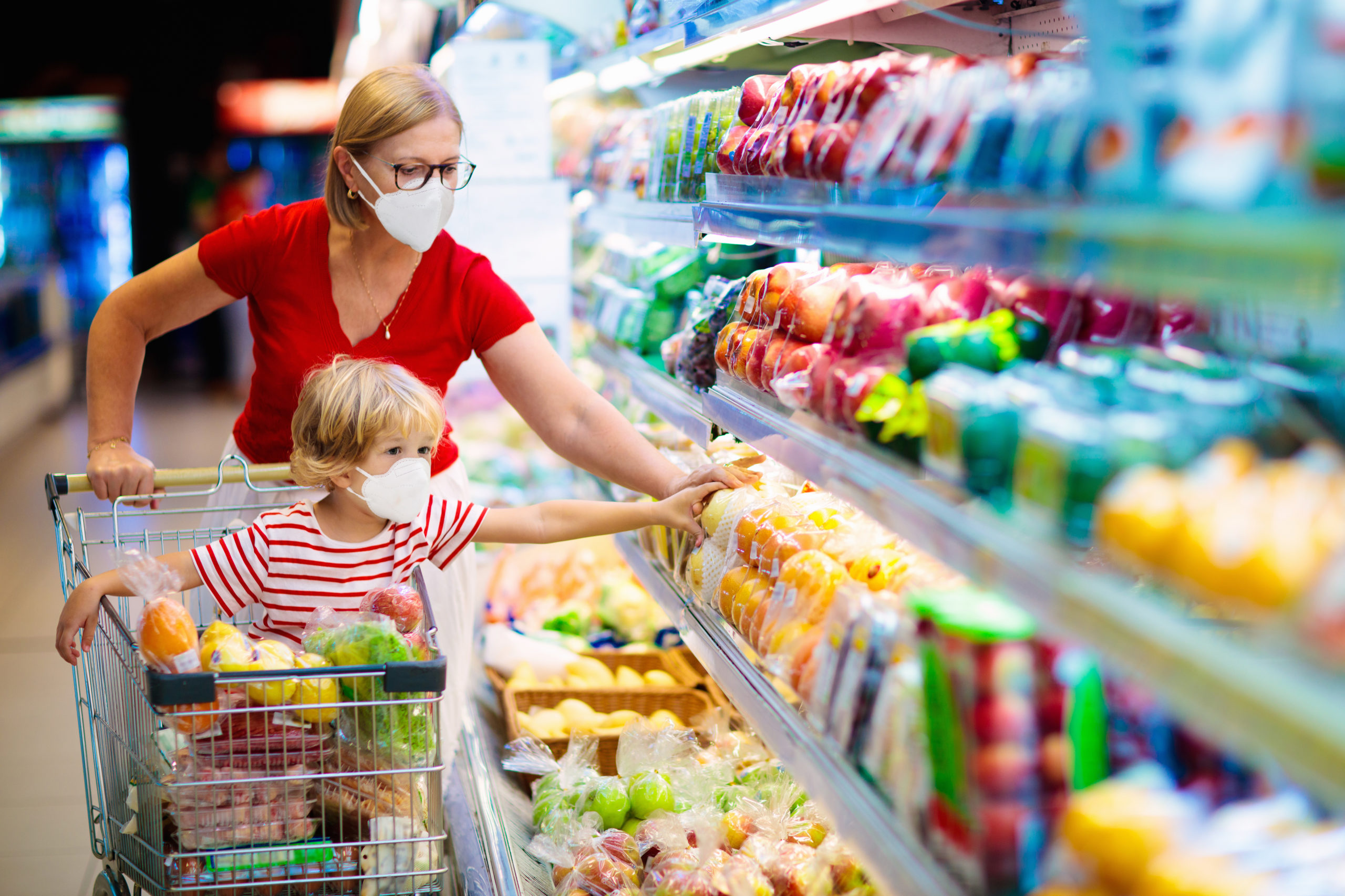
First and foremost, their employees are at risk – and therefore, so are their customers – us. Over the weekend, the Detroit Free Press reported that four Kroger workers have lost their lives at different stores in the metro area, making grocery shopping a potentially dangerous activity for all involved.
As a result, these critically important grocery outlets have had to initiate extensive, meaningful, and even creative sanitation procedures and safety changes. Many are now altering the insides of stores and the ways in which we shop for food.
More and more, we’re going to see one-way aisles (see photo at the top of today’s post) designed to protect both shoppers and store workers. The Publix chain has instituted this policy, and we can expect other stores to follow suit.
It’s not a perfect solution to better enforce social distancing while you shop, but it’s a start. And all it took was some imagination and a roll of blue adhesive tape.
Safer spacing in checkout lanes is another modification many grocery chains have put into effect. These are innovative solutions to a unique problem marketers and retail mavens are having to develop, often in very short periods of time. The basic grocery store model is essentially intact, but policies and messaging have had to change as a result of the COVID-19 attack.
The malady is the message.
Another case in point is Carvana, one of the best-known online sellers of cars. Rather than walk into a showroom and go through the Kabuki dance of negotiating a deal, Carvana (and similar brands like TrueCar and CarMax) lets you buy a vehicle while scrolling on a screen in your bathrobe. The car can be picked up at one of their “vending machines,” or on a flat bed truck delivered right to your door.
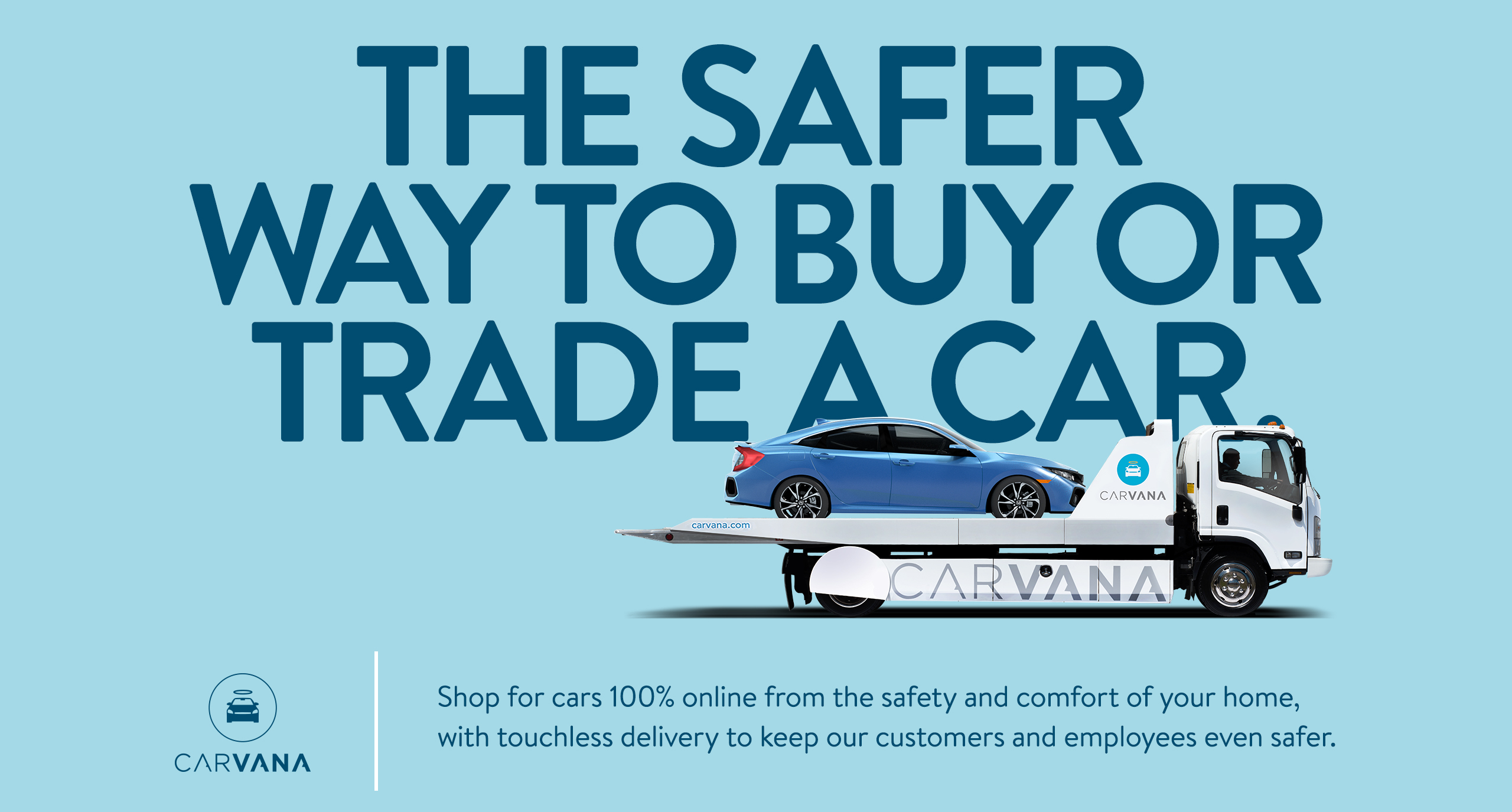 In short, perfect for the coronavirus outbreak.
In short, perfect for the coronavirus outbreak.
And that’s why Carvana hasn’t touched a perfectly good model. But they’ve altered their messaging to better fit the changing consumer mindset. While traditional dealerships may have been slow to make the adjustments to purchasing or leasing a vehicle via the web, Carvana is now using this advantage as a strong positioning wedge.
While their slug line was “The Better Way To Buy A Car,” they’ve retooled the slogan to be congruent with COVID-19.
Today, Carvana is “The Safest Way To Buy Or Trade A Car” (italics are mine). Without altering the way they do business, Carvana’s new positioning line reflects the world in which we now live.
The malady is the message.
And that brings us to broadcast radio.
The model is wonderful. Yes, radio executives on the corporate level, and local programmers have had to make adjustments, especially with personalities broadcasting from remote “studios” (often spare bedrooms and basements), because main control rooms have become less safe and less accessible.
But as we know so well, broadcast is the only real-time, local, audio medium. And it’s the only one available on every device: smartphones, tablet, computer, smart speaker, and yes, an AM/FM receiver.
Think about that.
While radio’s on-demand efforts have generally been spotty (whether it’s the ability to listen to today’s morning show or station podcasts), consumers may be looking for something different from their audio today. Thanks to COVID-19, most need in-the-moment entertainment and information coming directly from their local environs. They need personalities who “get it,” who are experiencing the same things they are. They need distractions that help them pass the time, and survive the ordeal of financial struggles, job worries, as well as their and their family’s personal welfare and safety.
Luckily with Techsurvey 2020 this year, we were able to field the study in January/February before all hell literally broke loose. This gives us up-to-date information across 14 formats, allowing us to keep tabs on why existing broadcast radio listeners are still tuning in.
While most stations were focused on the tactical challenges of staying on the air in March, this is the month to take that deep breath and begin to address the strategic advantages of broadcast radio. In much the same way Carvana switched up their messaging, programmers, marketers, and digital directors have the opportunity to re-examine their positioning in light of the new realities of COVID-19.
The malady is the message.
And below is your road map – the “Why Radio?” chart that lists the pecking order of the medium’s biggest assets – from ease of use, to being free of charge, to all those emotional benefits (shown in red). That last group – including companionship and mood elevation – have always been part of many stations’ assets.
But today, thanks to the global pandemic, they may resonate even more – depending on facts ranging from your brand strength to your personalities to your digital resources.

If you were a stakeholder in this year’s Techsurvey 2020 (or participated in the public and Christian music companion studies last year), now is a good time to dust off those digital files and re-examine the things about your brand that motivates your audience to listen to and love your station.
If you took a pass this year or simply didn’t participate, no harm/no foul. Send me an email, let me know your format, and I’ll send you this same chart focused on the types of listeners likely making up most of your cume.
You hear the scientists from the CDC talk about the need for data, testing, and diagnostics. For radio strategists, it’s very much the same game.
Business as usual during this once-in-a-lifetime event isn’t going to get it done. Broadcast radio will have to be craftier, more agile, and simply smarter in order to navigate this strategic obstacle course. It is necessary to rethink your station brand through this lens.
Like Carvana, it may simply be a matter of of a phrase or slogan that helps your station sound more relevant. 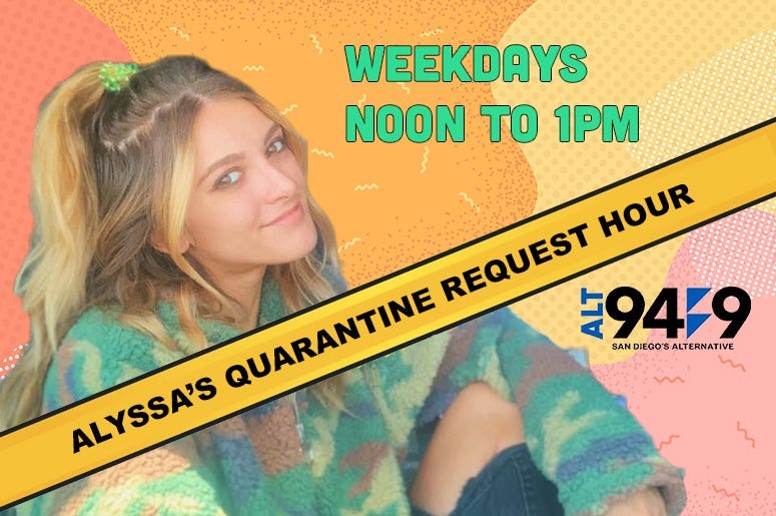
This example from Entercom’s ALT 94/9 in San Diego is a case in point. It’s a simple rebranding of the lunch show with Alyssa. Except now, the feature has been re-positioned to better reflect the audience and where they physically are at this moment in time. And judging by the volume of suggestions and comments on Facebook and other social platforms, the feature is connecting.
The malady is the message.
I’ll be presenting a free webinar “Broadcast Radio in the COVID-19 Era” – a look at our brand new research study. It’s in partnership with the RAB, tomorrow (Wednesday 4/15) at noon ET. You don’t register – just join the webinar here.
- Media And Technology In 2025: Believe It Or Not! - April 18, 2025
- In Radio, You Just Never Know - April 17, 2025
- The Secret To Making A Great Podcast (And Great Radio) - April 16, 2025




But as we know so well, broadcast is the only real-time, local, audio medium. And it’s the only one available on every device: smartphones, tablet, computer, smart speaker, and yes, an AM/FM receiver.
Think about that. Thank you Fred, RADIO IS A HOT MEDIUM.
In a weird way, this crisis may be a reminder to people who have always taken radio for granted. Thanks, Clark.
Excellent.
Thanks, Danny. Appreciate you reading out blog.
Check out the Uber Commercial “Thank You For Not Riding With Us” I think this is outstanding positioning
https://www.youtube.com/watch?v=_e8XLnMiCOE
Truly a beautiful piece of work, Scott. And a reminder the agency world is working overtime to produce concepts and ads like this. It’s important radio programmers & marketers do the same. Thanks for sharing this.